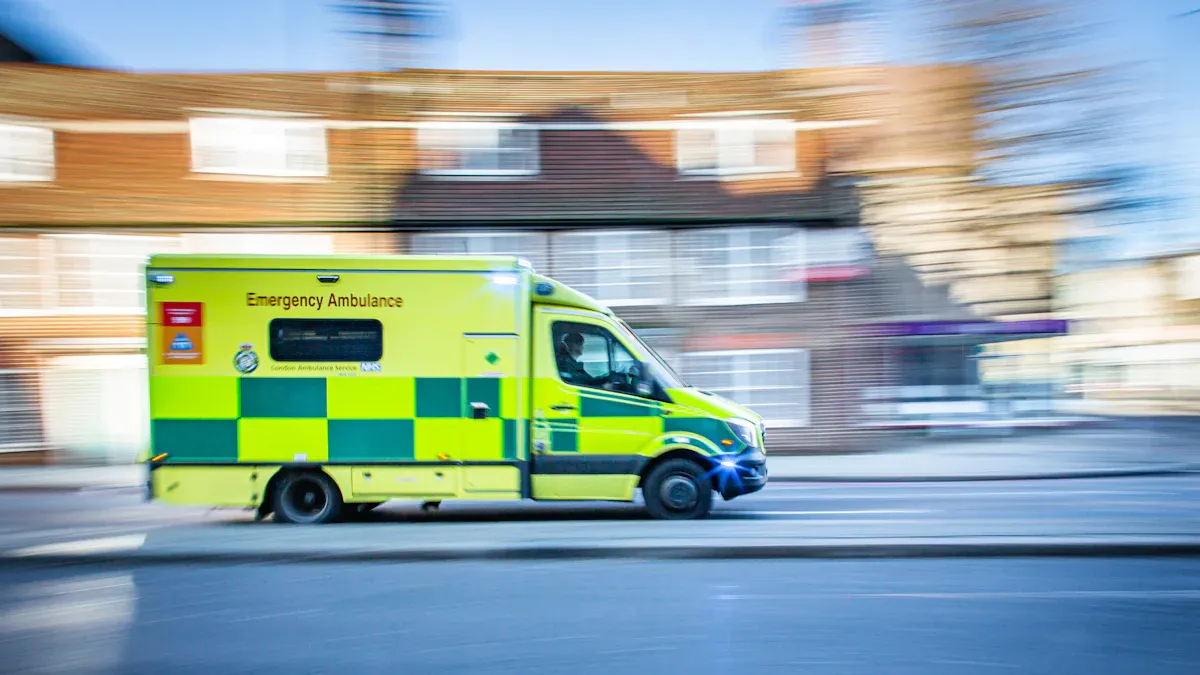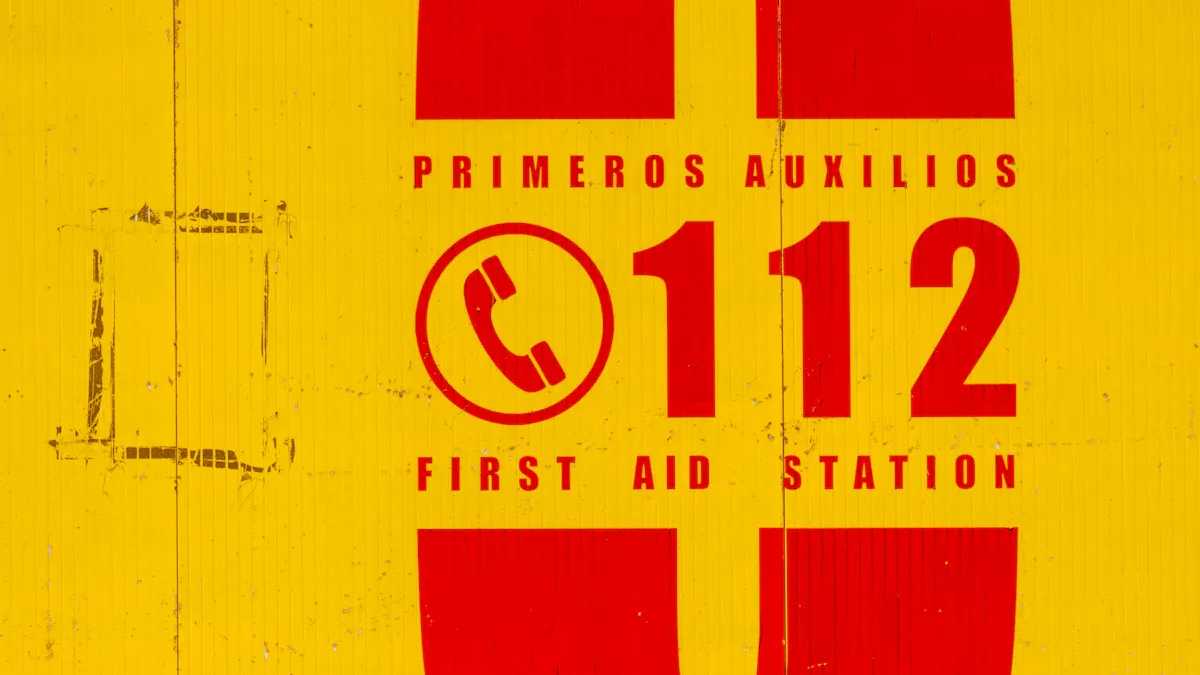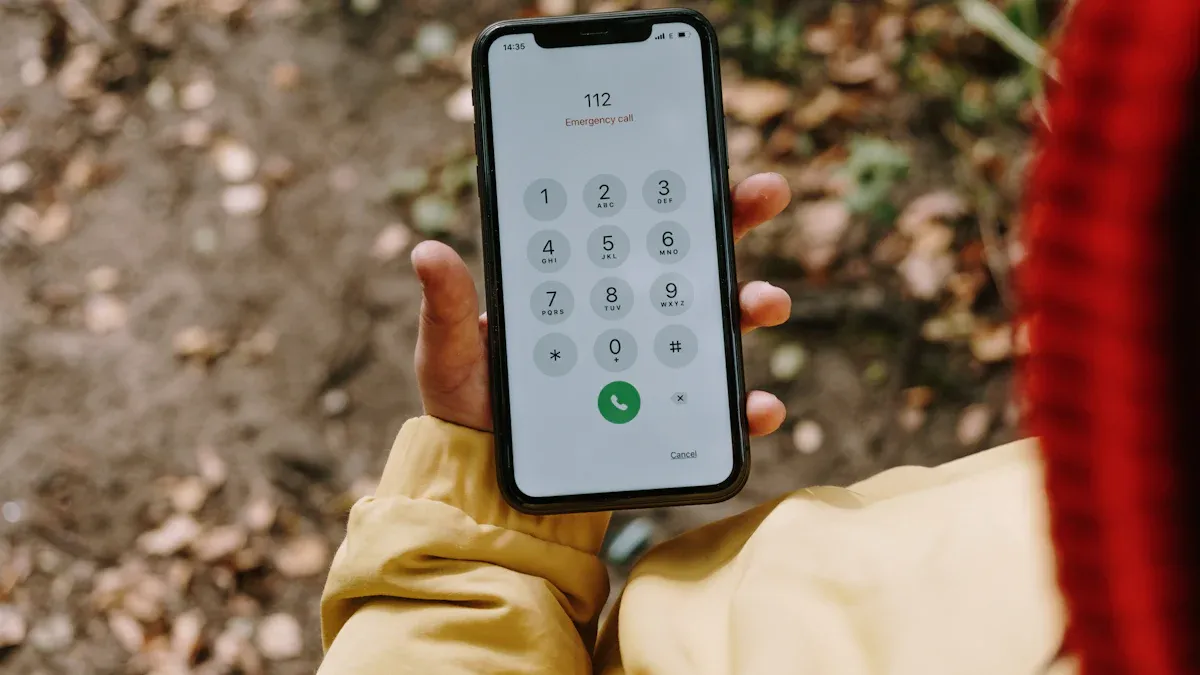
The JWAT411 Safety Speakerphone Intercom by Joiwo redefines emergency communication with its robust design and advanced technology. Built for industrial use, it combines hands-free operation with multimedia capabilities to meet critical needs. As the demand for solutions like the Industrial Analog Voip Public Handsfree Speakerphone grows, this device sets a new standard for reliability and efficiency.
Emergency communication systems are evolving rapidly. For instance:
- Enhanced 911 services have cut response times, saving countless lives.
- The global emergency call boxes market is forecasted to grow from USD 1.2 billion in 2023 to USD 3.3 billion by 2033, reflecting a CAGR of 10.5%.
With features like an auto dial emergency telephone function and compatibility with traffic emergency Telephone systems, the JWAT411 bridges gaps in traditional communication. Its industrial Heavy Duty telephone design ensures durability, even in extreme conditions, making it indispensable for critical scenarios.
Current Challenges in Emergency Communication

Emergency communication systems play a vital role in saving lives, but they face significant challenges that hinder their effectiveness. These challenges include outdated systems, interoperability issues, and delayed response times. Let’s explore these problems in detail.
Outdated Systems and Limited Functionality
Many emergency communication systems rely on outdated technology, which limits their functionality and adaptability. For example, older systems often lack features like real-time data sharing or multimedia capabilities, making it harder for responders to assess situations accurately. This is especially problematic in rural areas, where outdated systems exacerbate response delays.
A systematic literature review revealed that 78.4% of studies reported longer response times in rural areas compared to urban settings. Among these, 93.1% highlighted significant delays due to geographical challenges and limited resources. These findings underscore the urgent need for modernizing emergency communication systems to bridge the gap between rural and urban response capabilities.
"The ANOVA results indicated that the population size does not predict the number of registered accounts for Mass Notification Systems (MNS), with an F score of 5.232 and a significance score of 0.096, which was not statistically significant. This suggests that larger jurisdictions may have low enrollment rates in MNS, potentially leaving them unprepared in emergencies."
Lack of Interoperability Across Agencies
Interoperability gaps between emergency agencies create significant barriers to effective communication. Without standardized systems, agencies struggle to share critical information in real time. This lack of coordination leads to inefficiencies and delays during emergencies.
For instance, during large-scale incidents, traditional radio networks often become overwhelmed, resulting in communication breakdowns. A statistical report highlights that integrating Land Mobile Radio (LMR) with LTE technologies can reduce response delays significantly. This hybrid approach allows direct communication between agencies, improving coordination and response times.
| Evidence Type | Description |
|---|---|
| Communication Breakdown | Traditional radio networks can become overwhelmed during large-scale incidents. |
| Response Time Delay | Radio congestion and interoperability challenges can delay emergency responses. |
| Hybrid Solutions | Integrating LMR with LTE technologies reduces response delays significantly. |
Delayed Response Times in Critical Situations
Delayed response times can have devastating consequences during emergencies. In rural areas, 9.9% of crash fatalities were linked to EMS response times of 10 minutes or longer, resulting in approximately 333 deaths. In urban and suburban areas, 14.1% of fatalities were associated with response times of 7 minutes or longer, equating to about 1,796 deaths. Shortening these response times could prevent an estimated 2,129 passenger vehicle deaths annually.
Operational challenges also contribute to delays. Emergency services often face confusion, stress, and staffing shortages, particularly during crises like pandemics. Participants in a study shared their experiences:
- "At first, no one knew exactly what to do… People were very confused and had a lot of stress."
- "There was a shortage of staff, and… the absence of colleagues increased."
- "The psychological pressure… made the situation more difficult for us every day."
These challenges highlight the importance of adopting modern solutions like the Industrial Analog Voip Public Handsfree Speakerphone, which offers real-time data integration and multimedia communication to enhance clarity and speed up decision-making.
How JWAT411 Transforms Emergency Communication

Industrial Analog Voip Public Handsfree Speakerphone for Versatile Use
The JWAT411 stands out as a versatile solution for emergency communication. Its design caters to a wide range of environments, from hospitals and clean rooms to prisons and public spaces. The device’s robust housing, made from SUS 304 stainless steel, ensures durability even in high-risk or harsh conditions. Whether it’s extreme weather or potential vandalism, the JWAT411 remains reliable.
This speakerphone offers hands-free communication through both Analog and VoIP networks, making it adaptable to different setups. Its one-button emergency call functionality simplifies usage during critical moments. Users can also customize features like the keypad, color, and additional buttons to meet specific needs. The device’s flexibility extends to its mounting options, with both flush and surface-mounted configurations available.
| Feature | Description |
|---|---|
| Construction | Robust housing made of SUS 304 stainless steel, vandal resistant. |
| Compliance | CE, FCC, RoHS, ISO9001 certified. |
| Weather Protection | IP54 to IP65 rating for all-weather protection. |
| Communication | Hands-free operation with loudspeaking communication through Analog or VOIP networks. |
| Emergency Features | One-button emergency call functionality. |
| Customization | Options for keypad, color, and additional function buttons available. |
| Applications | Suitable for food factories, clean rooms, hospitals, prisons, and various public environments. |
| Sound Level | Can reach over 90db with external power supply. |
| Mounting Options | Available in flush or surface-mounted configurations. |
The JWAT411’s versatility makes it a top choice for organizations looking to enhance their emergency communication systems. Its adaptability ensures it can meet the demands of diverse industries while maintaining reliability and efficiency.
Real-Time Data Integration for Faster Decision-Making
In emergencies, every second counts. The JWAT411 leverages real-time data integration to speed up decision-making and improve outcomes. By connecting to modern communication networks, it enables seamless data sharing between responders and agencies. This capability ensures that critical information reaches the right people at the right time.
Case studies highlight the transformative impact of real-time data in crisis management:
- During the Ebola outbreak in West Africa (2014-2016), mobile technology and data analytics tracked the disease’s spread in real time, significantly improving response times.
- The 2018 Camp Fire in California used drones to gather real-time imagery, helping firefighters assess damage and allocate resources effectively.
- A United Nations study found that advanced technology in crisis management could reduce disaster response times by up to 40%.
The JWAT411 integrates seamlessly into such systems, providing a reliable platform for real-time communication. Its ability to connect with both Analog and VoIP networks ensures compatibility with existing infrastructure, making it a valuable tool for emergency response teams.
Multimedia Communication for Enhanced Clarity and Security
Clear communication is essential during emergencies. The JWAT411 takes this a step further by offering multimedia capabilities, including optional video integration. This feature allows responders to see what’s happening in real time, improving situational awareness and decision-making.
Multimedia communication also enhances security. For example, video calls can help verify identities or provide visual evidence during critical incidents. The device’s high sound quality, with a ringer volume exceeding 90dB, ensures that messages are heard even in noisy environments. Its frequency response range of 250 to 3000 Hz delivers clear audio, reducing misunderstandings.
| Evidence Type | Description |
|---|---|
| Transparency | Clear communication of cyber risks enhances decision-making and stakeholder engagement. |
| Preparedness | Employees are better prepared for cyber attacks when they understand risks clearly. |
| Executive Buy-in | Clear methodologies facilitate discussions around cybersecurity, leading to better alignment between business and security. |
By combining audio and video capabilities, the JWAT411 ensures that responders have all the information they need to act quickly and effectively. Its multimedia features set a new standard for emergency communication, making it an indispensable tool for modern crisis management.
The Broader Impact of JWAT411 on Emergency Response

Improved Coordination During Natural Disasters
Natural disasters demand seamless communication between agencies. The JWAT411 enhances coordination by providing a secure platform for information exchange. Its ability to integrate with Analog and VoIP networks ensures that responders can share critical updates in real time. This reduces duplication of efforts and improves preparedness.
Studies show that effective communication systems play a vital role in disaster management. For example:
- Secure information exchange platforms lead to faster responses and better recovery outcomes.
- Coordination across agencies prevents resource wastage and ensures timely action.
The JWAT411’s multimedia capabilities, including optional video integration, further strengthen disaster response. Responders can assess situations visually, enabling quicker decision-making. Whether it’s a flood or wildfire, this device ensures that teams stay connected and act efficiently.
Faster Response in Medical Emergencies
Medical emergencies often hinge on speed. The JWAT411 accelerates response times by offering real-time communication and location tracking. Its hands-free operation allows responders to focus on critical tasks without distractions.
A study comparing communication methods highlights the impact of smart technology:
| Communication Method | Average Response Time | Significance |
|---|---|---|
| Smart Emergency Call Points | 6.01 minutes | P < .001 |
| Traditional Phone Calls (1669) | 9.14 minutes |
By reducing response times, the JWAT411 saves lives. Its integration with Real-Time Location Systems (RTLS) ensures that responders reach patients faster. This combination of speed and precision makes it a game-changer for medical emergencies.
Enhanced Situational Awareness for Better Community Outcomes
Situational awareness is key to effective emergency response. The JWAT411 improves awareness by providing clear audio and video communication. Its high sound quality ensures that messages are heard, even in noisy environments. Optional video features allow responders to see what’s happening, reducing misunderstandings.
Research on Out-of-Hospital Cardiac Arrest (OHCA) patients in rural areas highlights the importance of situational awareness. Predictors like location and call category significantly impact response times. The JWAT411 bridges these gaps by offering reliable communication tools that adapt to diverse scenarios.
| Response Performance | Lives Saved | Property Damage Averted |
|---|---|---|
| 87% | 25 | $2,000,000 |
| 90% | Higher | Lower |
By enhancing situational awareness, the JWAT411 contributes to better community outcomes. It empowers responders to act decisively, minimizing losses and improving recovery efforts.
The JWAT411 Safety Speakerphone Intercom by Joiwo redefines emergency communication. Its hands-free operation, multimedia features, and durable design make it a game-changer.
- The market for emergency response systems is set to grow rapidly.
- Technology integration will boost efficiency in crisis management.
- Streamlined processes can improve outcomes during emergencies.
JWAT411 sets the standard for 2025 and beyond.
FAQ

What makes the JWAT411 suitable for harsh environments?
The JWAT411 features SUS304 stainless steel housing, vandal resistance, and an IP65 water-resistant rating. It performs reliably in extreme temperatures and high-risk settings. 🌧️❄️
Can the JWAT411 integrate with existing communication systems?
Yes, it supports Analog, VoIP, and GSM configurations. This flexibility ensures seamless integration with most existing emergency communication infrastructures. 🔗
Is the JWAT411 customizable for specific needs?
Absolutely! Users can customize the color, keypad, and additional buttons. It adapts to various industries, from hospitals to public spaces. 🎨


